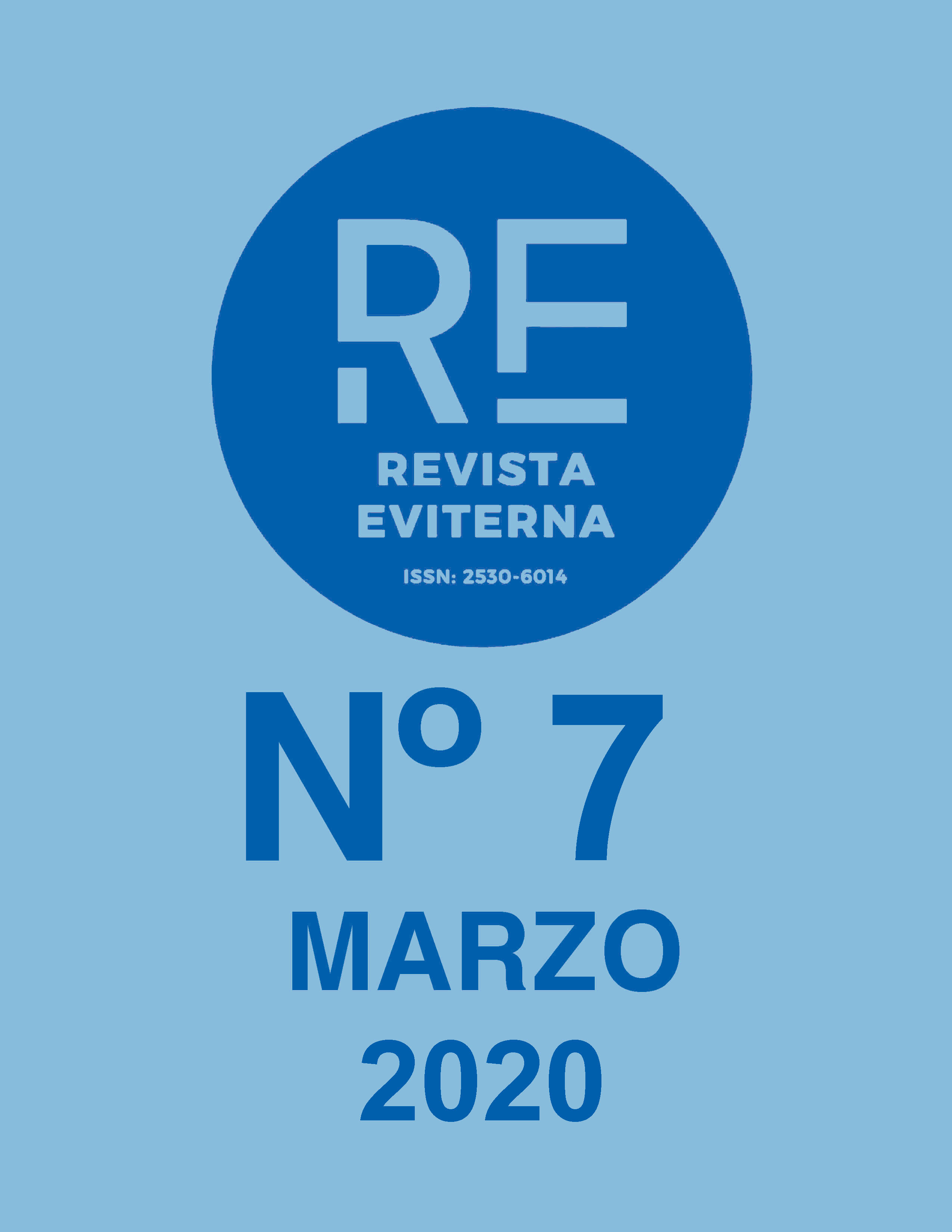Pietro Vannini´s Processional Cross
DOI:
https://doi.org/10.24310/Eviternare.v0i7.8392Keywords:
Pietro Vannini, Processional Cross, Goldsmith’s art, Italy, 15th centuryAbstract
Nowadays, Pietro Vannini is considered one of the most skilled 15th- century Italian goldsmiths. He was able to harmonize stylistic features of the late Gothic tradition with the new elements typical of the Renaissance art. Indeed, he realised various monstrances, crosses and reliquaries that are still displayed in important museums and churches. Yet, this article focuses on one of his less famous creations, a processional cross displayed at the Diocesan Museum of Osimo. The artefact has not been adequately documented in the past, despite its relevance, and this has caused confusion on its origin and iconography. Various are the hypothesis on the date of its origin, among them the one from scholar Clerici assigns the cross to the late fifteenth century. Moreover, complex is the analysis and identification of the figures that decorate the cross from the iconographical point of view. Therefore, the aim of this paper is to clarify the story of the cross and to underline its relevance. The article starts from the origin of the cross along with a stylistic and iconographic in-depth analysis, where scholars such as Gori, Fanciulli and Montevecchi (one of the best scholars of Vannini) express their views. Then proceeds to a focus on the several restorations the piece has undergone, from those mandated by bishop Spada and bishop Compagnoni, to the campaignsthat have not been documented, yet can be inferred from the changes they brought to the artefact and its various descriptions throughout different periods in history.
Downloads
Metrics
Publication Facts
Reviewer profiles N/A
Author statements
Indexed in
-
—
- Academic society
- N/A
- Publisher
- Universidad de Málaga
References
Barucca, Gabriele (2001), in Ori e Argenti: Capolavori di oroficeria sacranella provincia di Macerata, Giannatiempo Lopez, Maria, Milano: Federico Motta Editore, pp. 104-207.
- (2006). “Lorenzo d’Ascoli e Antonio da Sant’Elpidio, maestri orafi del primo Quattrocento” in Atlante dei beni culturali dei territori di Ascoli Piceno e Fermo, vol. Beni artistici: Oroficerie, Cinisello Balsamo, pp. 89-105.
Bertaux, Émile (1896), L’Esposizione di Orvieto e la storia dell’arte. In Archivio Storico dell’Arte, vol. II, Roma: Tipografia Cooperativa Editrice.
Bulgari, Costantino G. (1969). Argentieri gemmari e orafi d’Italia: notizie storiche e raccolta dei loro contrassegni con la riproduzione grafica dei punzoni individuali e dei punzoni di stato, vol. III Marche-Romagna, Roma: Fratelli Palombi Editori.
Carnevali, Ermanno (2014). La cattedrale di Osimo: Storia, documenti e restauri del complesso monumentale, Silvana Editoriale.
Clerici, Giuseppe (2010). Pietro Vannini scultore orafo del Quattrocento, Ascoli Piceno: Istituto Superiore di Studi Medievali Cecco d’Ascoli.
Compagnioni, Pompeo (1783).Memorie istorico-critiche della Chiesa e de'vescovi di Osimo, Roma: Zampel.
Costantini, Costantino (1906). Note di arte antica marchigiana. La Croce stazionale nel Duomo di Osimo, Rivista Marchigiana Illustrata, n° 6, pp. 188-190.
Fabiani, Giuseppe (1968). Ascoli nel Quattrocento, vol. II, Ascoli Piceno: Società Tipografica Editrice.
Fanciulli, Luca (1769). Osservazioni critiche sopra le antichità cristiane di Cingoli,Osimo: Quercetti.
Gentili, Gino Vinicio (2001). Il duomo di Osimo, Osimo: Fondazione “Don Carlo”, pp. 230-233.
Gori, Antonio Francesco (1749). Simbolae litteriae: opuscula varia philologica scientifica antiquaria signa lapides numismata gemma set monumenta Medii Aevi nunc primum eduta complectentes,Vol. III,Firenze: Ex Imperiali Typographio praesidum permissu.
Guido, Sante (2010). “Brevi note biografiche su Nicola da Guardiagrele” in La memoria e la speranza, Città del Vaticano, pp. 87-91.
Montevecchi, Benedetta (2002), in Opere d’arte nella città di Osimo,Massa, M. & Carnevali, E., vol. II, Ancona: Arti Grafiche Annibali, pp. 64-65.
- (2006). Pietro Vannini principe degli orafi ascolani. In Atlante dei beni culturali dei territori di Ascoli e Fermo, vol. Beni artistici: Oroficerie, Cinisello Balsamo, pp. 107-126.
- (2008). Dopo Nicola: presenze e suggestioni dall’Abruzzo alle Marche di Pietro Vannini. In Nicola da Guardiagrele orafo tra Medioevo e Rinascimento, S.Guido. Roma, pp. 609-627.
Morello, Giovanni (1999). Libri di pietra. Mille anni della Cattedrale di Ancona tra Oriente e Occidente, Mondadori Electa.
Paoletti, Vincenzo (2009). Pietro Vannini e la scuola di oreficeria ascolana nel Quattrocento, Ascoli Piceno: Istituto Superiore di studi medievali Cecco d’Ascoli.
Quinterio, Francesco (2009). Architettura del Classicismo tra Quattrocento e Cinquecento, vol. Marche, Roma: Gangemi Editore.
Ricci, Amico (1834). Memorie storiche delle arti e degli artisti della marca di Ancona, vol. I, Macerata: Tipografia di Alessandro Mancini.
Riccioni, Stefano (2016). “Nicola da Guardiagrele: le firme e le opere” in Arte medievale, IV serie, Milano: Silvana Editore, pp. 255-266.
Unknown Author (1657). Inventario, Osimo: Duomo di San Leopardo.
Unknown Author (1719). Inventario, Osimo: Duomo di San Leopardo.
Archidiocesi di Ancona-Osimo. Cronotassi dei vescovi.Recuperado de: http://www.diocesi.ancona.it/arcivescovo/cronotassi-dei-vescovi/
Downloads
Published
How to Cite
Issue
Section
License
All the contents published in Revista Eviterna are subject to the Creative Commons Reconocimento-NoComercia-Compartirigual 4.0 license, the full text of which can be found at <http://creativecommons.org/licenses/by-nc-sa/4.0>
They may be copied, used, disseminated, transmitted and publicly exposed, provided that:
The authorship and original source of your publication (Journal, editorial and URL of the work) are cited.
They are not used for commercial purposes.
The existence and specifications of this use license are mentioned.

Copyright is of two kinds: moral rights and patrimonial rights. Moral rights are perpetual, inalienable, inalienable, inalienable, inalienable and imprescriptible prerogatives.
In accordance with copyright legislation, Revista Eviterna recognizes and respects the moral rights of the authors, as well as the ownership of the economic right, which will be transferred to the University of Malaga for dissemination in open access.
The economic rights refer to the benefits obtained by the use or disclosure of the works. Revista Eviterna is published in open access and is exclusively authorized to carry out or authorize by any means the use, distribution, disclosure, reproduction, adaptation, translation or transformation of the work.
It is the responsibility of the authors to obtain the necessary permissions of the images that are subject to copyright.







12.png)



